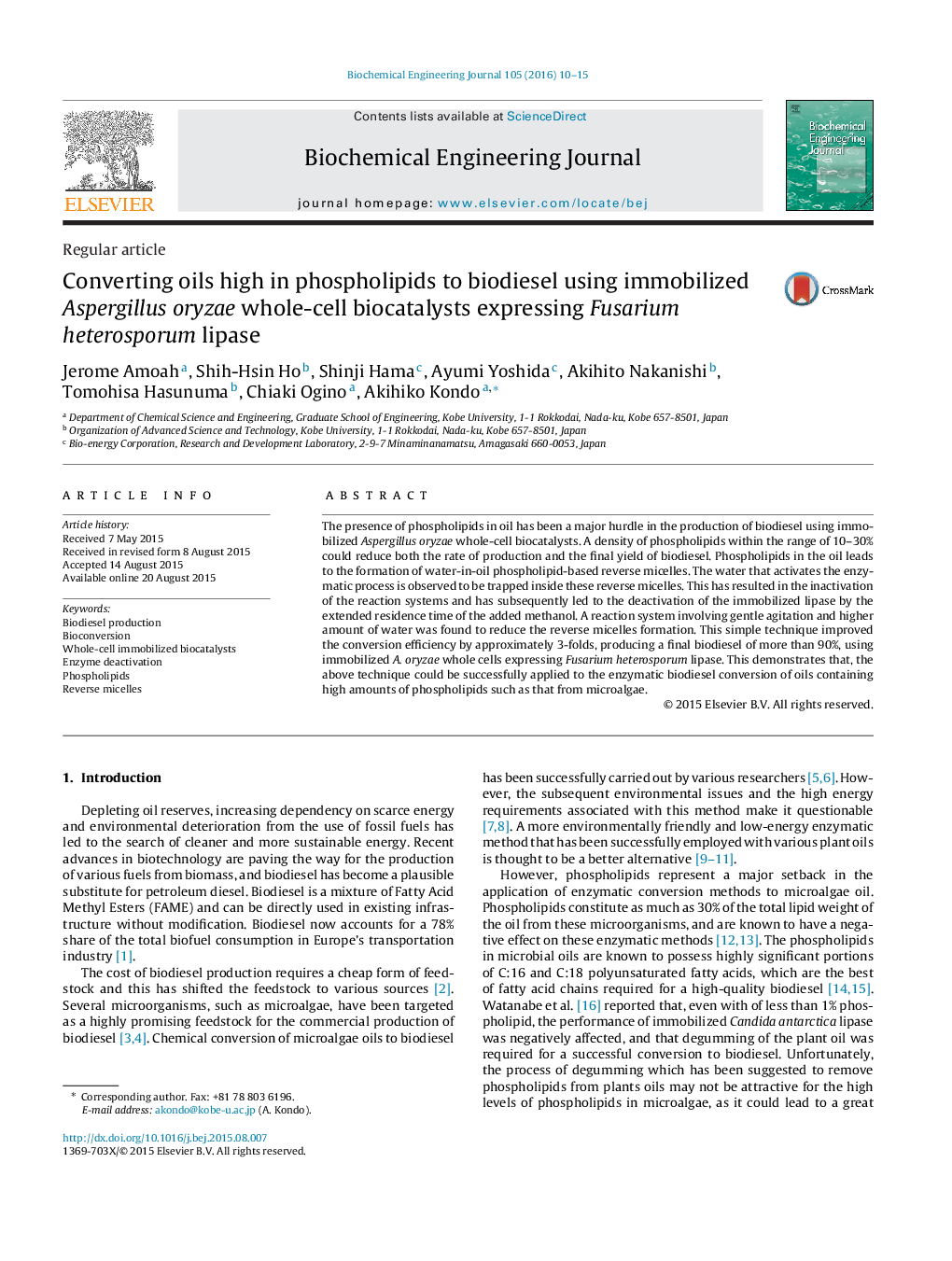| Article ID | Journal | Published Year | Pages | File Type |
|---|---|---|---|---|
| 2802 | Biochemical Engineering Journal | 2016 | 6 Pages |
•Bioconversion of high phospholipid-containing oil.•The catalyst used was immobilized whole-cell A. oryzae-expressing FHL.•Effect of reverse micelle formation on bioconversion.•The reduction of reverse micelle formation was crucial for bioconversion.•Conversion was improved by approximately 3-fold to more than 90%.
The presence of phospholipids in oil has been a major hurdle in the production of biodiesel using immobilized Aspergillus oryzae whole-cell biocatalysts. A density of phospholipids within the range of 10–30% could reduce both the rate of production and the final yield of biodiesel. Phospholipids in the oil leads to the formation of water-in-oil phospholipid-based reverse micelles. The water that activates the enzymatic process is observed to be trapped inside these reverse micelles. This has resulted in the inactivation of the reaction systems and has subsequently led to the deactivation of the immobilized lipase by the extended residence time of the added methanol. A reaction system involving gentle agitation and higher amount of water was found to reduce the reverse micelles formation. This simple technique improved the conversion efficiency by approximately 3-folds, producing a final biodiesel of more than 90%, using immobilized A. oryzae whole cells expressing Fusarium heterosporum lipase. This demonstrates that, the above technique could be successfully applied to the enzymatic biodiesel conversion of oils containing high amounts of phospholipids such as that from microalgae.
Graphical abstractFigure optionsDownload full-size imageDownload as PowerPoint slide
